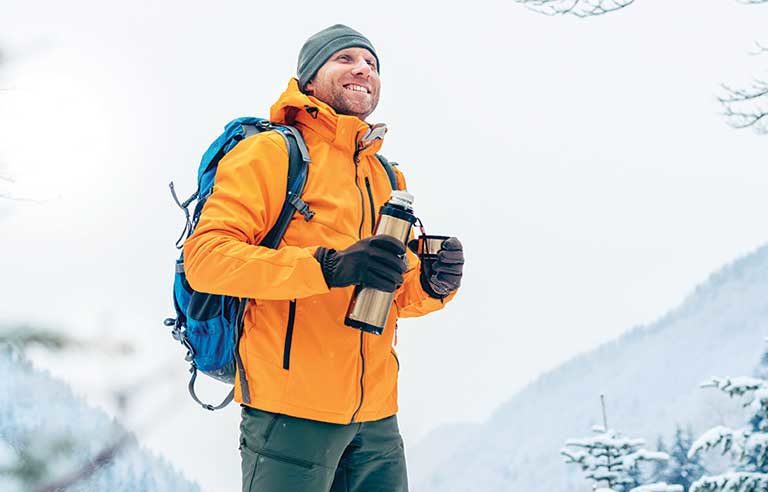Keep it safe outdoors this winter
Tips for staying warm, preventing injuries and more

Photo: Solovyova/iStockphoto
Being outdoors can add fun and adventure to any winter day. But whatever activity you choose – hiking, sledding, skiing, ice fishing or something else – you need to make sure you’re protected.
In 2021, more than 110,000 people were treated in ERs for injuries related to winter activities, according to the most recent data from the Consumer Product Safety Commission.
Help keep yourself safe by following these tips.
Dress right
Dress in layers. If you get too warm, you’ll be able to shed a layer and still be comfortable.
The same goes if your clothes get wet – sweat or water on your skin can draw heat away from your body. That’s why a waterproof outer layer (one that also provides ventilation) is important.
For your middle and inner layers, pick a wool or synthetic material to help maintain body heat and keep away moisture.
So, what should you avoid? Cotton, including jeans, flannel and sweatpants. The Washington Trails Association says cotton stops providing warmth when it’s wet.
Lastly, you can lose a lot of body heat through your head, ears, hands and feet, so keep those covered. Make sure your footwear is waterproof and insulated.
Protect yourself
If you’ll be taking part in a high-intensity activity, guard against injuries by wearing appropriate protective gear. That could include helmets, goggles, wrist guards, and knee and elbow pads.
Your helmet should be specifically designed for the sport or activity you’ve chosen, Stanford Medicine Children’s Health says. “Bicycle helmets do not provide adequate protection,” the health system adds. “The helmet must fit properly to be effective. Replace any helmet that has taken a significant blow.”
As for equipment such as skis and sleds, check them before use to make sure they aren’t damaged and are in good working order.
Warm up
Although it might be cold outside, don’t jump straight into winter activities with cold muscles. Doing so can increase your risk of injury. Instead, warm up first with some light activities and stretch your muscles.
Wear sunscreen
Sunscreen in winter? Absolutely. The sun still produces ultraviolet radiation during the colder months. And snowpack on the ground can reflect the sun’s harmful rays onto your face and skin.
Use a sunscreen with a sun protection factor, or SPF, of at least 30. That’ll block about 97% of the UV rays. Reapply that sunscreen about once every two hours.
Hydrate
Think you don’t need to drink water because it’s cold outside? The fact is, you can sweat and get dehydrated during winter, too.
Kids are at an increased risk for dehydration, Safe Kids Worldwide cautions, so encourage them to drink water “before, during and after play.”
As for adult beverages, they don’t mix well with winter activities. Drinking alcohol can cause you to dehydrate more quickly, in addition to impairing your reaction time and judgment. Sticking with water when you’re active outdoors is the safest choice.
Post a comment to this article
Safety+Health welcomes comments that promote respectful dialogue. Please stay on topic. Comments that contain personal attacks, profanity or abusive language – or those aggressively promoting products or services – will be removed. We reserve the right to determine which comments violate our comment policy. (Anonymous comments are welcome; merely skip the “name” field in the comment box. An email address is required but will not be included with your comment.)
